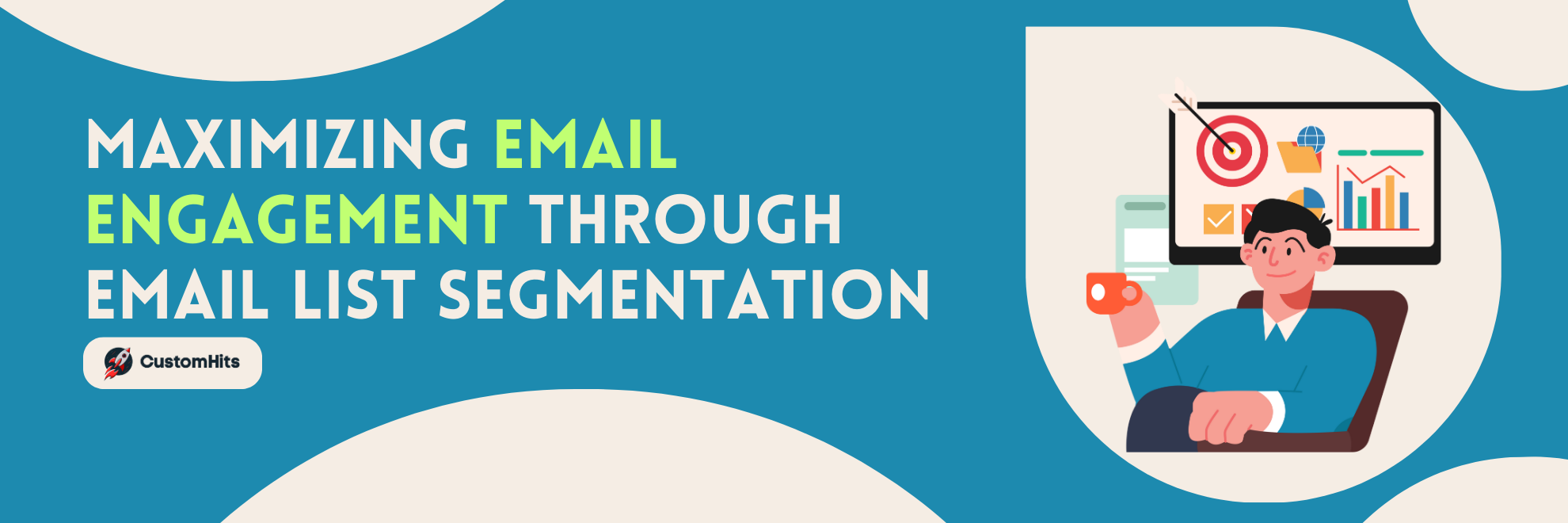

Overview
Content
Strategies For Email List Segmentation
Email list segmentation is the practice of dividing email subscribers into smaller segments based on specific criteria such as demographics, behavior, or interests. This segmentation allows for a more targeted and personalized approach in email marketing campaigns. The benefits of segmentation are significant, including higher open rates, increased clicks, improved email revenue, and repeat customer business. In fact, statistically, segmented campaigns average 46% higher open rates.
Segmentation based on demographics involves utilizing data such as age, gender, company position, and income level to tailor content to specific audience groups. For instance, a clothing retailer can segment its email list based on the gender of the recipients to send targeted promotions for men's and women's apparel. Similarly, behavioral segmentation can be based on the customer's purchase history, shopping preferences, and clicks. For example, an online bookstore can segment its email list to recommend books based on the customer's past purchases or wish list items. Furthermore, segmenting based on interests and preferences allows businesses to create personalized content that resonates with the unique tastes of different customer segments. For instance, a travel company can segment its list to send specialized travel offers based on customers' specific destination interests.

Strategies for Effective Email List Segmentation
When it comes to effective email list segmentation, businesses have various strategies at their disposal to ensure a more targeted and personalized approach. One of the key strategies is utilizing email marketing platforms with robust segmentation features. For example, platforms like Mailchimp, Constant Contact, and HubSpot offer user-friendly tools that allow businesses to segment their email lists based on demographics, behavior, and interests. These platforms enable businesses to create dynamic segments and tailor their email content to specific audience groups, ultimately leading to higher engagement and conversion rates.
Another successful strategy involves the collection of contact data through forms. By incorporating targeted questions in subscription forms or surveys, businesses can gather valuable information about their subscribers. This data can then be used to create segmented email lists based on specific criteria, such as geographic location, preferences, or purchase history. For instance, an online clothing retailer could collect data on subscribers' preferred clothing styles, which can then be used to create segmented lists for sending targeted promotions or product recommendations.
In addition to this, sending welcome emails to new subscribers is not only a great way to initiate a relationship but also an opportunity to gather initial data for segmentation. By including a brief survey or preferences form in the welcome email, businesses can begin to understand their subscribers' interests and preferences, enabling them to segment their email lists effectively from the outset. This approach sets the stage for personalized communication and helps in building a loyal customer base right from the start.
Segmenting Your Email List Based on Demographics, Behavior, and Interests
When it comes to email list segmentation, demographics play a crucial role in targeting specific audiences effectively. For instance, a company selling luxury watches may want to segment its email list based on income level to ensure that promotions for high-end timepieces are only sent to subscribers with the financial capacity to make a purchase. Similarly, demographic segmentation based on age and gender can be used to tailor content to different age groups or genders, ensuring that the messaging is relevant and relatable to each segment.
Behavioral data is another valuable criterion for segmenting email lists. For example, an online retailer can use purchase history to create segments of customers who have previously bought specific product categories. This allows them to send targeted emails featuring related or complementary products, increasing the likelihood of repeat purchases. Additionally, tracking wish list items, shopping preferences, and clicks can provide insights into individual customer preferences, enabling personalized product recommendations and tailored promotional offers.
Furthermore, segmenting based on customer interests and preferences can significantly enhance the effectiveness of email marketing campaigns. For instance, a sporting goods company can segment its email list based on customers' interests in specific sports or outdoor activities. This allows the company to send relevant content, such as product launches, event invitations, or expert tips, to subscribers who have expressed a keen interest in those activities, thereby increasing engagement and conversion rates.
In essence, leveraging demographic, behavioral, and interest-based segmentation ensures that email content is not only targeted but also highly relevant to the recipients, leading to improved open rates, click-through rates, and ultimately, better conversion rates [2].
Personalization and Targeting in Email Marketing
Personalization in email marketing involves tailoring the content of emails based on segmentation criteria. This ensures that the right message reaches the right audience, leading to improved engagement and response rates. By targeting specific customer segments with tailored content, businesses can create more meaningful connections with their audience. Successful email list segmentation strategies include considering email engagement, past purchase history, and personal interests as key segmentation criteria.
For instance, a company specializing in outdoor gear can use email list segmentation to personalize content for different customer segments. Customers who have previously purchased camping equipment can receive emails showcasing new camping gear arrivals or tips for outdoor adventures. On the other hand, customers who have shown interest in hiking equipment but haven't made a purchase can receive targeted emails with special offers on hiking gear. This level of personalization demonstrates an understanding of the customers' interests and preferences, leading to a more engaging and relevant email marketing experience.
Moreover, targeting specific customer segments with personalized content can lead to increased customer satisfaction and loyalty. For example, a clothing retailer can use segmentation to send exclusive offers on professional attire to customers in corporate positions, while customers in creative roles may receive promotions for casual, trendy clothing. This level of personalization shows that the business understands the diverse needs of its customer base, fostering a stronger connection and increasing the likelihood of conversions and repeat business.
Automation in Email List Segmentation
Automation is an essential tool for effective email list segmentation. By utilizing automation, businesses can streamline the process of dividing their email subscribers into smaller, targeted segments. This allows marketers to focus on the more personalized and human aspects of their campaigns, as the automation takes care of the technical details.
For example, automation can be used to create dynamic segments based on customer behavior, such as sending follow-up emails to customers who have abandoned their shopping carts or targeting inactive subscribers with re-engagement campaigns. This level of personalization and targeting can significantly improve engagement and conversion rates, leading to a more effective email marketing strategy.
Furthermore, automation can help in monitoring customer engagement levels and adjusting segment criteria accordingly. For instance, if a customer's behavior changes, automation can ensure that they are moved to a more relevant segment based on their new interactions with the brand. This level of responsiveness and adaptability is crucial for maintaining the relevance and effectiveness of email marketing campaigns over time.
In summary, automation is a powerful tool for email list segmentation, allowing businesses to efficiently manage their subscriber segments and focus on delivering personalized and targeted content to their audience. It not only saves time but also enables marketers to concentrate on building meaningful connections with their subscribers, ultimately leading to improved engagement and better marketing outcomes.
Conclusion
In conclusion, it is evident that effective email list segmentation is a key strategy for businesses to enhance their email marketing campaigns. By dividing subscribers into smaller segments based on demographics, behavior, and interests, companies can significantly improve the relevance and impact of their email communications.
Moreover, the use of personalization and targeting in email marketing through list segmentation can further amplify the effectiveness of campaigns. For instance, a company can personalize emails by addressing subscribers by their first name and tailoring product recommendations based on their past purchase history. This level of personalization can lead to increased customer engagement and loyalty.
In light of these benefits, it is crucial for businesses to thoroughly analyze their customer data and implement effective email list segmentation strategies. By doing so, they can create more targeted, relevant, and engaging content, ultimately leading to improved customer satisfaction, higher open rates, and increased revenue.
